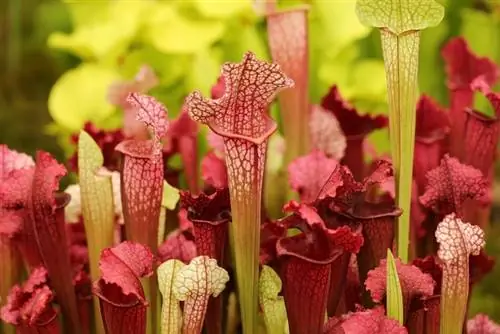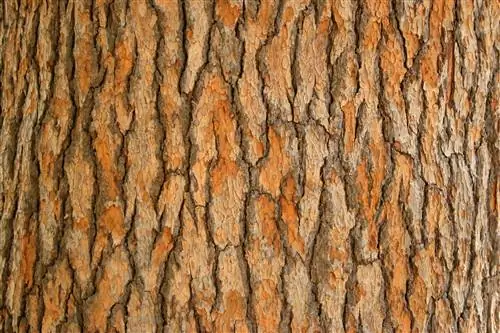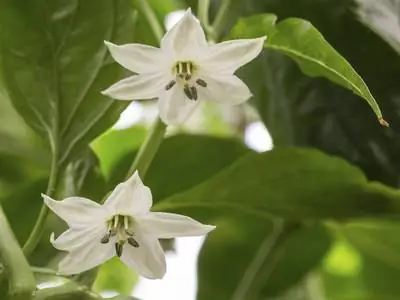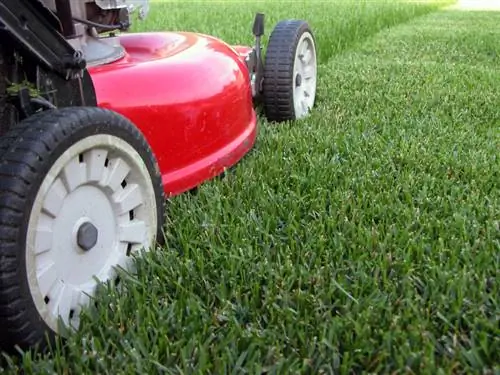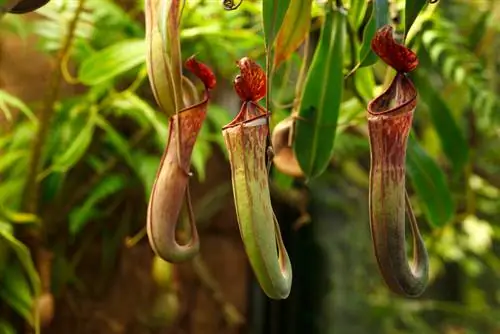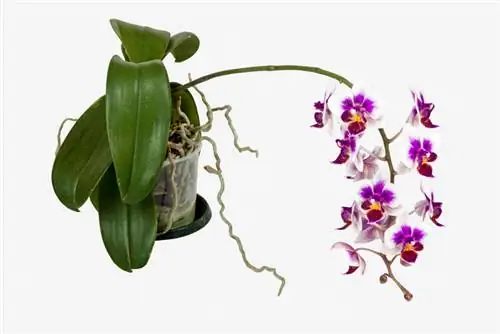- Author admin [email protected].
- Public 2023-12-16 16:46.
- Last modified 2025-01-23 11:20.
Carnivorous plants develop very different methods to catch and digest their prey, the insects. In addition to sticky leaves and folding traps, some species form calyces into which the prey falls and is then digested.
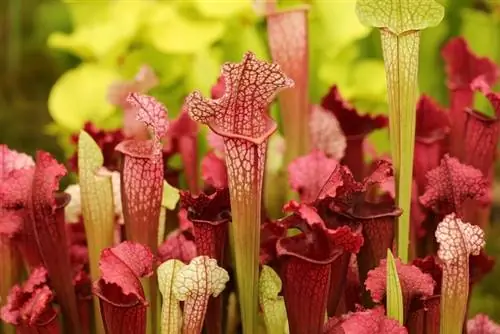
How does the calyx of a carnivorous plant work?
Carnivorous plants with calyxes use their leaves to catch and digest insects. The leaves form a calyx that has a slippery surface and enzymes inside to attract, hold and decompose insects. Caring for the plant requires lots of sun, high humidity and lime-free water.
Leaves form into a cup
Some carnivorous plants use their leaves to catch insects. The long leaves twist together to form a calyx. Other species capture prey in bag-like traps that look like pitchers. It's not for nothing that these species are called pitcher plants.
Catch insects with the cup
The calyx of a carnivorous plant is generally wider at the top and either tapers to a point or forms a pouch or jug below the edge. The calyxes often have a pretty, reddish color. They give off a sometimes aromatic, but sometimes unpleasant smell that attracts insects.
The upper edge of the cup is mirror-smooth so that no insect can stay on it. It just slips into the trap.
In the lower part of the calyx there is a secretion that contains several enzymes with which the prey can be decomposed and digested. If the secretion is not present, the plant cannot digest prey. The trap then dries up and falls off.
Proper care for the formation of many calyces
In order for a carnivorous plant to form many calyces to catch insects, the carnivore must have a suitable location and be well cared for.
Carnivorous plants prefer:
- A bright location with lots of sun
- high humidity of more than 40 percent
- Temperatures in summer between 20 and 32 degrees
- Winter temperatures from 10 to 16 degrees
Carnivorous plants cannot tolerate it when the plant substrate dries out. They also don't like hard water, so only rainwater or still mineral water can be used for watering.
Do not overwinter pitcher plants in a cool place
Pitcher plants can be overwintered at consistent temperatures. Only smaller calyxes form during winter than in summer.
Tip
The size of the prey that a carnivorous plant can capture in its calyx depends on the diameter of the calyx. Wasps can also fit into large openings.

